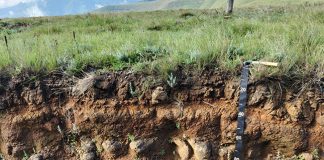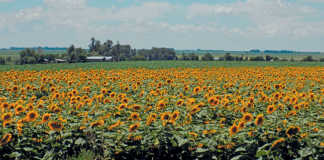A potential collaboration with an international tobacco company could also give the initiative a major shot in the arm. While SA has the highest percentage of FSC certified forests in the world, with over 80% of timber plantations certified, not one of SA’s 20 000 small-scale timber producers are certified. Most of these farmers farm plantations on communal land, ranging in size from 1ha or less to several hundred hectares, amounting to about 45 000ha.
“Small growers in SA are probably the last nut we have to crack in terms of FSC certification. Mondi and Sappi have out-grower schemes where they assist emerging black farmers to grow trees. But the difficulty lies in getting certification for them. FSC has a group certification scheme but the standards and auditing requirements are simply too high,” said environmental consultant, Dr John Scotcher, FSC National Representative for SA and member of Forestry SA’s environmental committee.
The South African FSC Standards Development Group has made progress in developing a certification scheme for small and low intensity management forests (SLIMF). The standard, together with the plantation standard for large growers, was submitted to FSC International in April 2012 for approval.
However, there is still concern that even this draft standard may not be entirely applicable to SA’s small growers. The Forestry SA Environmental Management Committee has therefore established a sub-committee to research new initiatives launched by the FSC in Bonn in Germany.
“Small grower certification will ensure that the environmental impacts of forestry at small-scale level are managed at a scale appropriate to the impacts. Timber companies are very interested in the programme, because they want to increase their supply of FSC timber. It is still very much in the planning stage but FSC is delighted because they have been battling to get small scale certification into Africa,” said Scotcher.
Demand is emanating not only from timber companies. In a new development, the Africa regional operations for USA global leaf tobacco supplier and processing company, Universal Leaf Tobacco (ULT) has expressed an interest in getting involved in the research.
ULT sources a substantial portion of its African tobacco from small scale growers in five countries: Malawi, Zimbabwe, Tanzania, Mozambique and Zambia. In order to air-cure tobacco, racks and sheds are often constructed from timber, while wood is used to cure flue-cured tobacco. While ULT participates in efforts to conserve forestry resources in Africa, most timber for tobacco growing and general community use currently comes from natural woodlands.
To fulfil the timber needs to cure and to construct barn structures for 1ha tobacco, ULT estimates that between 180 and 550 trees should be planted annually over a seven-year period. Within seven years, ULT estimates growers will be using a sustainable source of timber.
ULT has approached auditing company SGS-SA as a first step, to audit the number of trees planted for the specific tobacco curing process and barn construction. The next step would be to move towards small scale grower’s group certification.
“At this stage we will focus our attention on driving this as a pilot project in SA. But if we receive funding from FSC International, we can expand it to small scale farmers in other countries in collaboration with ULT, which has access to farmers through their extension officers. It is an innovative and ambitious scheme,” Scotcher said.












